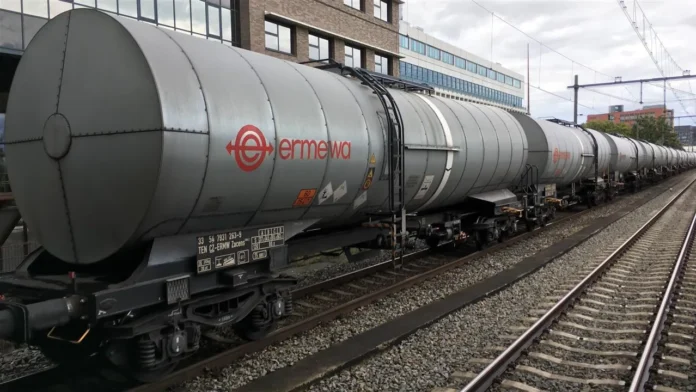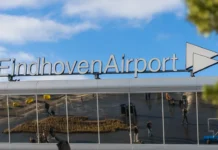The number of wagons passing through Eindhoven with hazardous substances will continue to remain high. The Ministry of Infrastructure and Water Management has informed the municipality of Eindhoven and the province of Noord-Brabant of this.
Earlier, a letter had been sent to The Hague from the province and the cities of North Brabant. The cabinet wants to increase the number of toxic trains that run through the densely populated area. The concerns expressed in the letter were not able to change the government’s mind.
On the contrary, State Secretary Vivianne Heijnen commented on the risk ceiling. It allowed only a maximum number of toxic trains to drive through North Brabant. However, the earlier calculation of the risk ceiling was a mistake. The decision to limit the number of toxic trains was made on the assumption that many trains would travel on the Betuweroute. That turned out to be unrealistic, writes the State Secretary. “The trains have their destination or origin along the Brabant route,” it sounds. “The international train routes do not always connect to the Betuweroute. In retrospect, we can conclude that it was an incorrect and unrealistic assessment to set the risk ceilings so low.”
‘Urban area’
Moreover, there are other reasons for letting the toxic trains run through Eindhoven and other cities in Brabant. According to the State Secretary, the only alternative is that the trains have to run through another urban area.
That is a remarkable claim. The Betuweroute runs from Dordrecht through Gorinchem, Tiel, the centres of the cities of Nijmegen and Arnhem are avoided and the first two places each have about 40,000 inhabitants. The Brabant Route runs from Dordrecht through the city centers of Breda, Tilburg and Eindhoven, cities with 180,000, 200,000 and 240,000 inhabitants respectively. Nevertheless, the State Secretary calls the fact that the toxic trains have to run through other ‘urban areas’ ‘the biggest disadvantage’.
Extra cost
A bigger problem therefore seems to be that the Betuweroute entails extra costs for the transport companies. According to the State Secretary, there is a good chance that the higher costs will cause carriers to switch to other transport if they have to use the Betuweroute. The switch to road transport would be obvious.
To prevent this, it is therefore important that trains with hazardous substances continue to run through the three largest cities in North Brabant, says State Secretary Heijnen. The fact that the increase in hazardous substances through the Eindhoven city centre also creates difficulties for new construction around the railway is a problem that can be solved, says Heijnen.
‘Common sense’
According to the State Secretary, the risk calculations that are made to limit the risk of a major disaster are not realistic. Above all, ‘common sense’ should be used to look at the possibility of improving safety.
Risk calculations should therefore not be leading in decision-making, in the opinion of the State Secretary. After all, it should not depend on the number of wagons with hazardous substances, or the risk ceilings. The result is a situation is seen as safe or unsafe. This requires looking at ‘the entirety of measures and their supervision’.
Responsibility
In case of an train accident involving hazardous substances, the municipalities, including Eindhoven, will remain responsible for external safety. The government cannot provide the municipality and province with more insight into the type and quantity of hazardous substances that will be transported in the coming years. If an accident actually occurs, ProRail always has information available about the transported substances, according to the State Secretary.
Source:Studio040
Translated by: Shanthi Ramani











